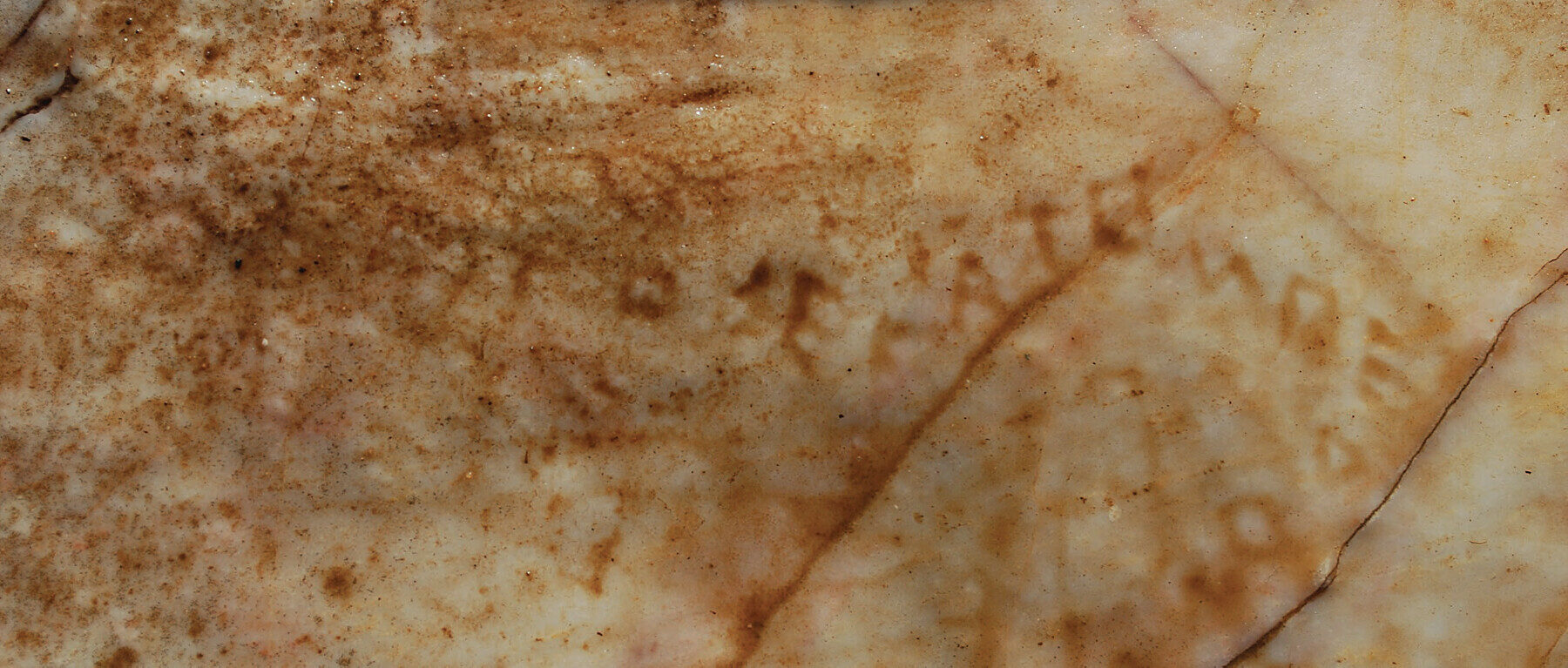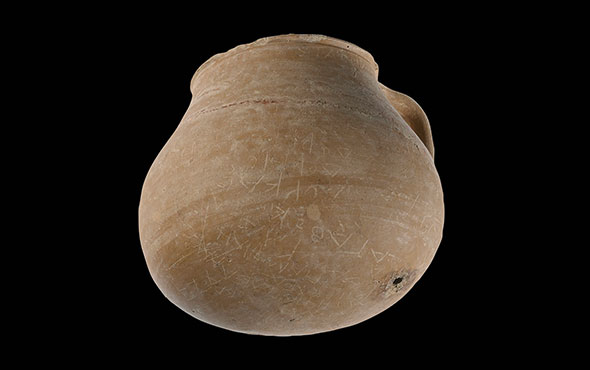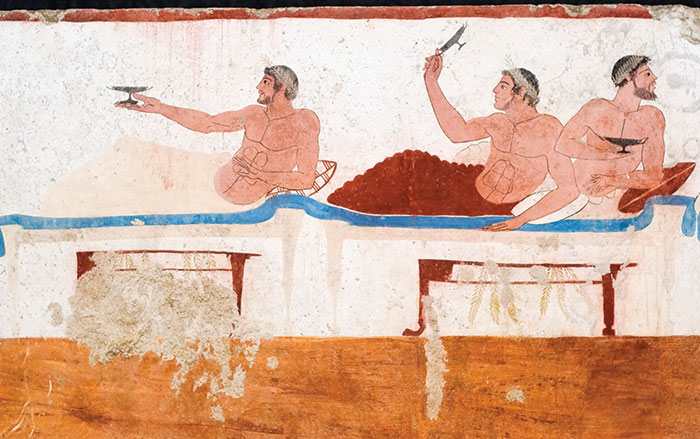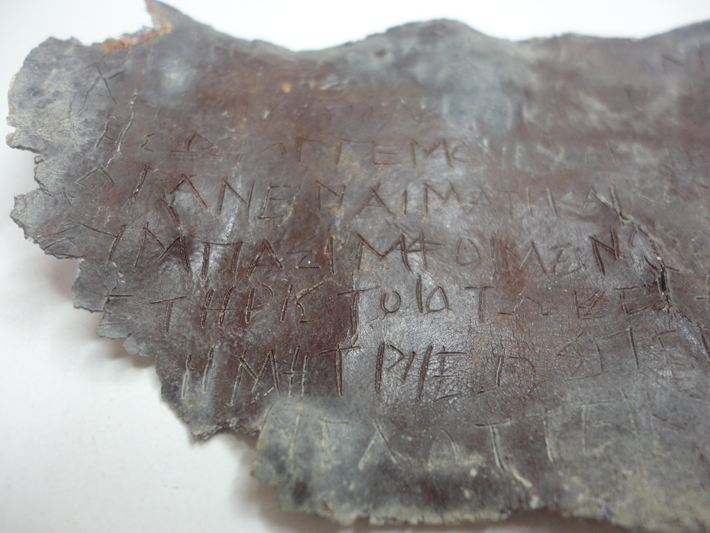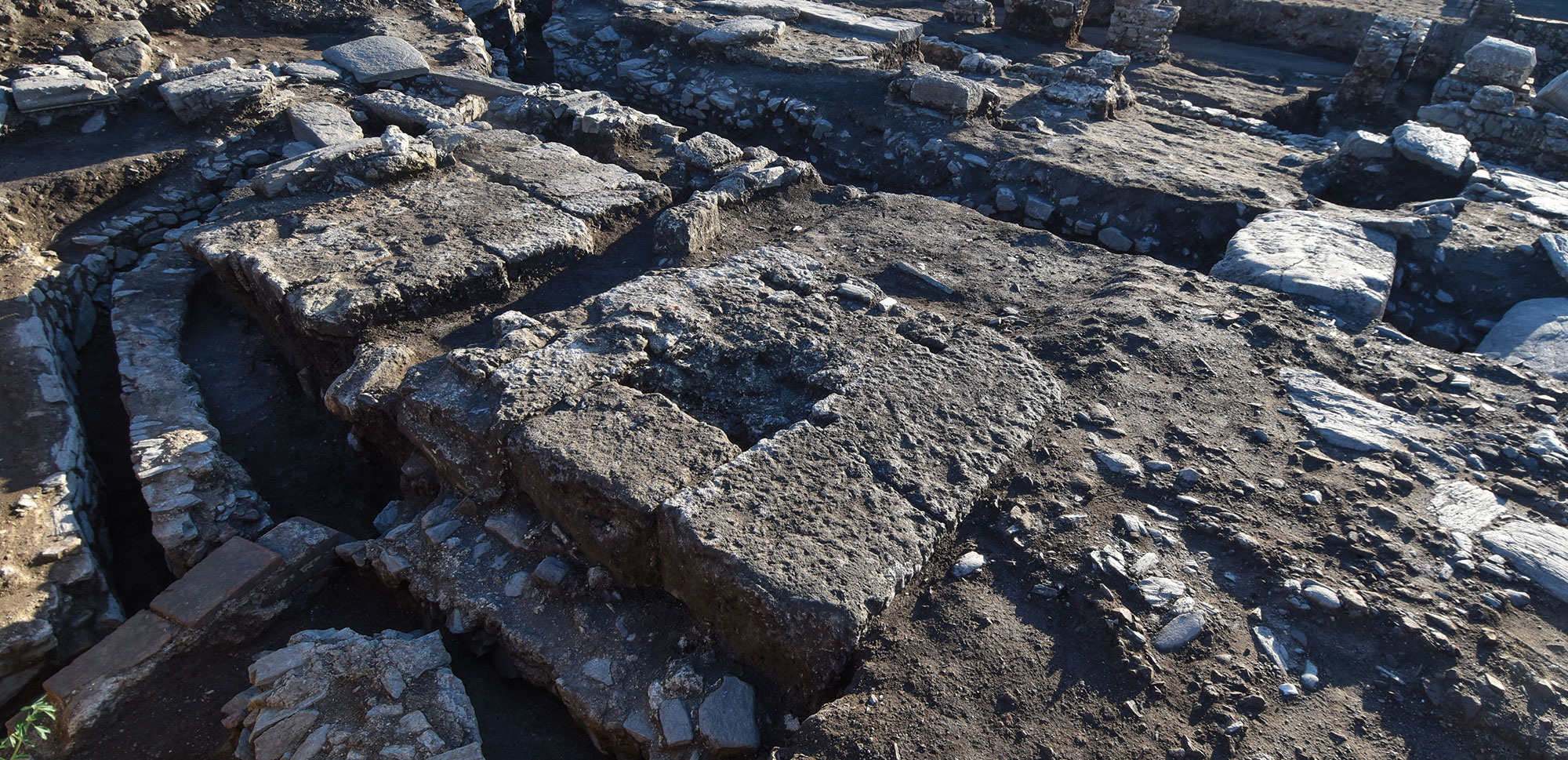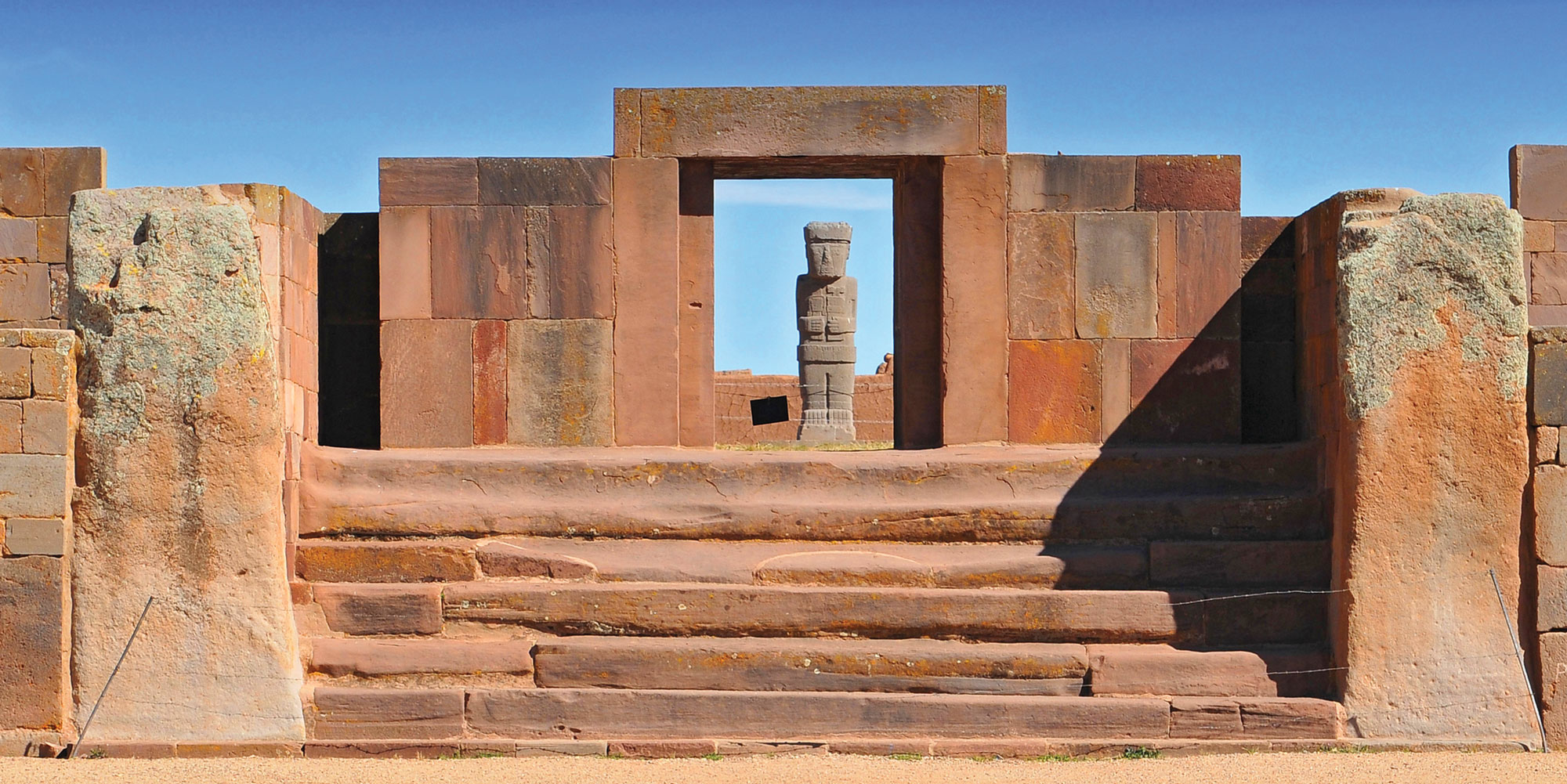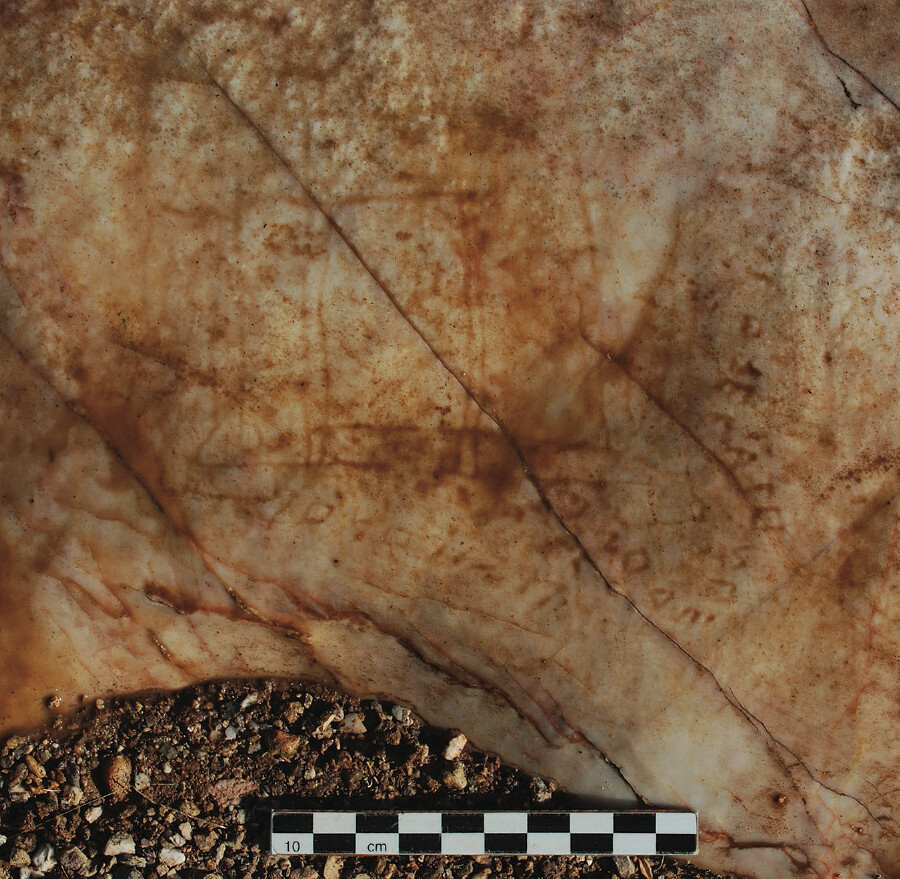
NIJMEGEN, THE NETHERLANDS—According to a Newsweek report, a graffito discovered some 12 miles southeast of Athens may offer a clue to a structure that once stood on the city’s Acropolis. The image was discovered among more than 2,000 graffiti on marble outcrops at Barako Hill by archaeologist Merle Langdon of the University of Tennessee, Knoxville, who documented the site. Short inscriptions accompanying many of these images were written in a Greek script that has been dated to the sixth century B.C., before structures on the Acropolis of Athens were destroyed in an attack by the Persian army in 480 B.C. This graffito depicts a colonnaded building, and it is accompanied by an inscription that states it was drawn by an individual named “Mikon,” who identified his drawing as “the Hekatompedon.” “What is more: from an official Athenian decree dating to 485/4 B.C., it has long been known that there was something called the Hekatompedon on the old Acropolis before the arrival of the Persians,” said Jan van Rookhuijzen of Radboud University. “But there is much discussion as to what the Hekatompedon was,” he explained. Some scholars have suggested that the decree referred to a temple, while others have argued that the Hekatompedon was an open courtyard. This drawing, van Rookhuijzen said, supports the idea that the Hekatompedon was a temple. “The graffito is also significant because it attests to early literacy, as well as an interest in architecture, among the rural population of Attica,” he concluded. Read the original scholarly article about this research in American Journal of Archaeology. To read more about research on structures on the Acropolis, go to "The Parthenon by Any Other Name?"


